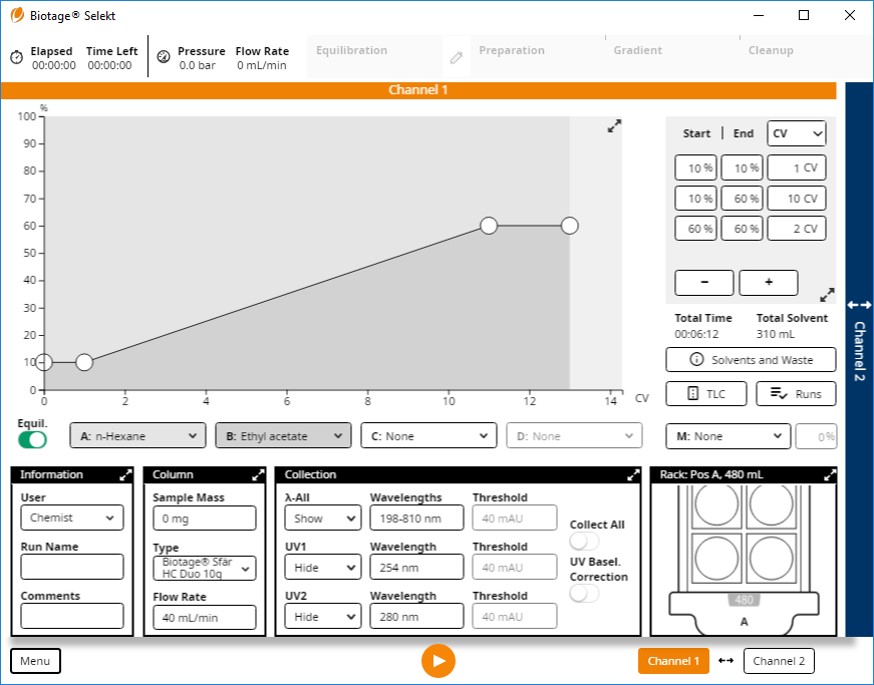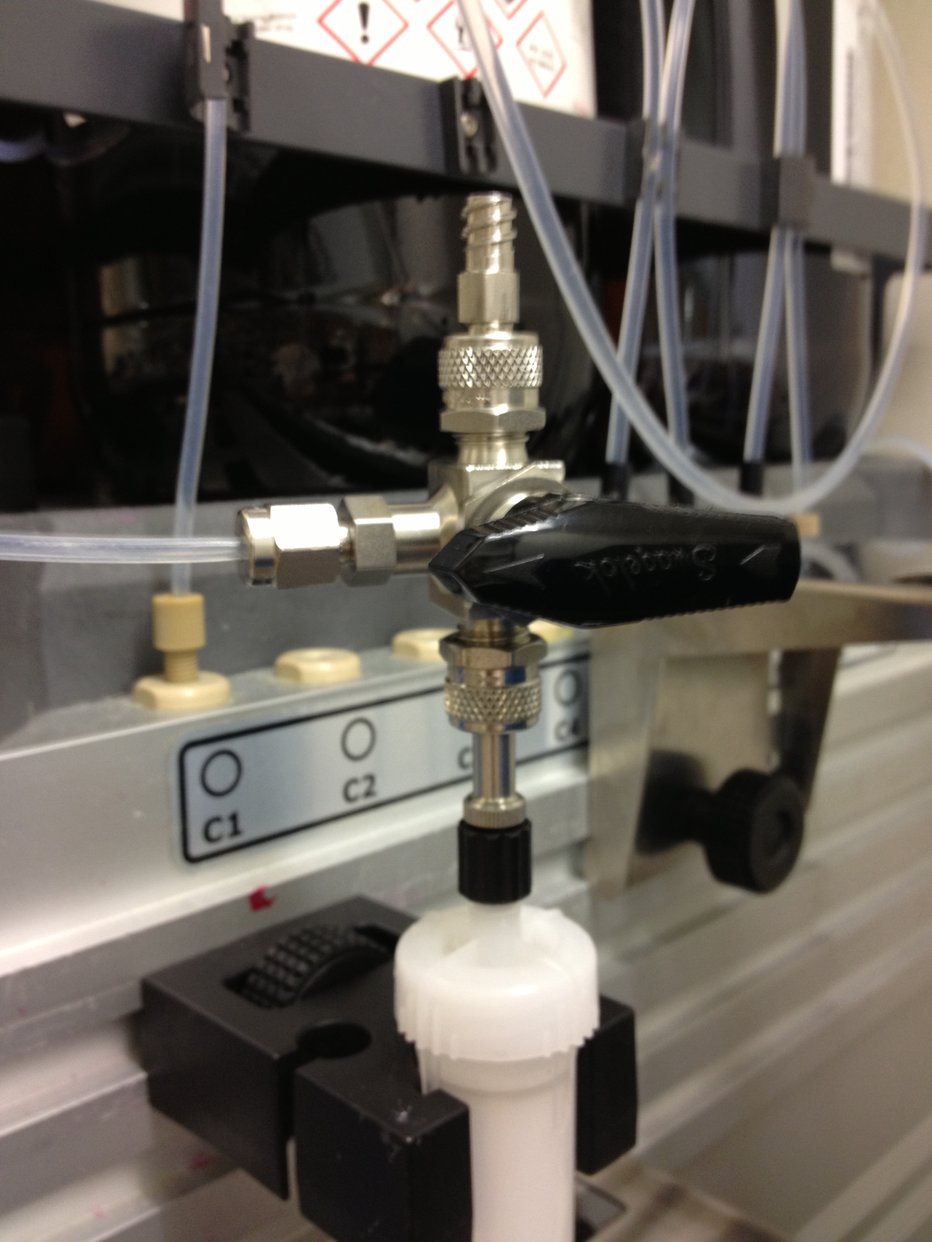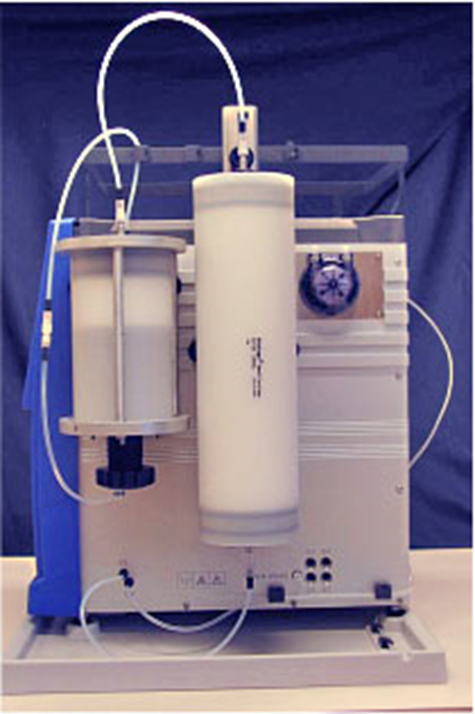Ever experience the problem where you load your dissolved sample into a flash column via a syringe only to encounter either resistance or “blowback”? Blowback is a term describing the situation where your sample does not stay in the column but flows back out of the column’s cap after the loading syringe is removed.
So, what causes these problems and how can you prevent them from happening?
A few situations can generate these issues, Table 1.
|
Problem Source |
Remedy |
|
Sample is viscous |
|
|
Sample component(s) precipitation on column |
|
|
Blocked system fluid path |
|
|
Sample solvent not penetrating media (typically a reversed-phase issue) |
|
Viscous Samples
Viscous samples can be very difficult to inject, especially into larger columns. I have found that introducing an air gap between the sample and the plunger can often help to ensure the entire sample enters the column. Even with this, though, there can be some blowback so keeping the plunger depressed until solvent flow out of the column and the registering backpressure on the system are at zero, Figure 1.

Figure 1. The Biotage® Selekt provides important information such as the pressure generated (upper left of the screen shot) while the pump is in use.
Other options include switching dissolution solvents, diluting the sample solvent with a compatible, less viscous solvent, or warming the sample to 30-35 °C for injection to lower its viscocity.
An injection valve can also be used to stop blowback, Figure 2. The valve has two positions, one allowing the sample to be injected and the other closing that path and allowing the gradient solvents to freely flow though the column.

Figure 2. Picture of 3-way valve on a flash column. After loading the sample, the valve is rotated to allow pumped solvent to enter and stops any sample blowback our of the injection port.
A really good option is dry loading which eliminates all of the issues because the sample is dried onto a sorbent of your choice.
Lastly, if dry loading is not feasible and the sample size and purification column is large, utilization of an external pump can be used. In fact, the Biotage® Isolera LS system has a built-in peristaltic pump just for this purpose, Figure 3.

Figure 3. Isolera LS with standard sample loading pump.
Sample Components Precipitating on Column
One of the most important chromatographic success factors is sample solubility. If one or more compounds in your reaction mixture is insoluble in the method’s mobile phase, there is a good chance they will precipitate, even during injection into an equilibrated column. To ensure this does not happen, test the sample’s solubility in the gradient’s starting blend, e.g., 5% ethyl acetate in hexane. If soluble, you are likely good to proceed, if not, then look at different solvents for your purification. This may also require a need to switch from normal-phase to reversed-phase or reversed-phase to normal-phase.
Here again, dry loading is an excellent option as you sample will be dried with and distributed over a media of your choice. If insoluble in the mobile phase, the components will stay with the dry load media and cause few backpressure issues.
Blocked Fluid Path
This issue can be very frustrating and not initially recognizable. One cause can be precipitated compound(s) in the fluidics path. Though the system maybe able to pump solvent during a gradient run, there could be some undissolved particulates partially blocking flow and generating higher than normal operating pressure. Since the pressure a human can exert on a syringe is quite a bit less than the system’s pump, you feel resistance to the liquid injection.
Some solutions include evaluating the system’s pressure without a column (attach the inlet and out tubing and pump solvent). There should be less than 10 psi of pressure at flow rates of 40 mL/min and less. If the pressure is substantially higher, then pump a series of solvents from weak to strong and back again to try to dissolve any of the precipitate.
If running reversed-phase, these solvents will generate higher pressures at the same flow rates but should still be low. Since reversed-phase columns are reusable, you can test the column’s back pressure and if high, flush it with a series of solvents with increasing strength to dissolve the precipitated or strongly bound compounds that may be obstructing flow. I will often pump acetone through my C18 columns to flush out strongly retained compounds.
Sample Not Penetrating the Column Media
This is most often a reversed-phase problem. Reversed-phase media is very hydrophobic and water is very hydrophilic. When loading a water solubilized sample into a C18 column, there can be significant repulsion forces which will reduce the sample’s ability to permeate the media’s pores and cause the injected sample to flow out of the column’s injection port.
This issue can be overcome by either dissolving the sample in DMSO or DMF (even mixed with some water), in the mobile phase, by dry loading, or by using the 3-way injection valve.
If you found this helpfully and are interested in learning more about flash chromatography, visit our website:

